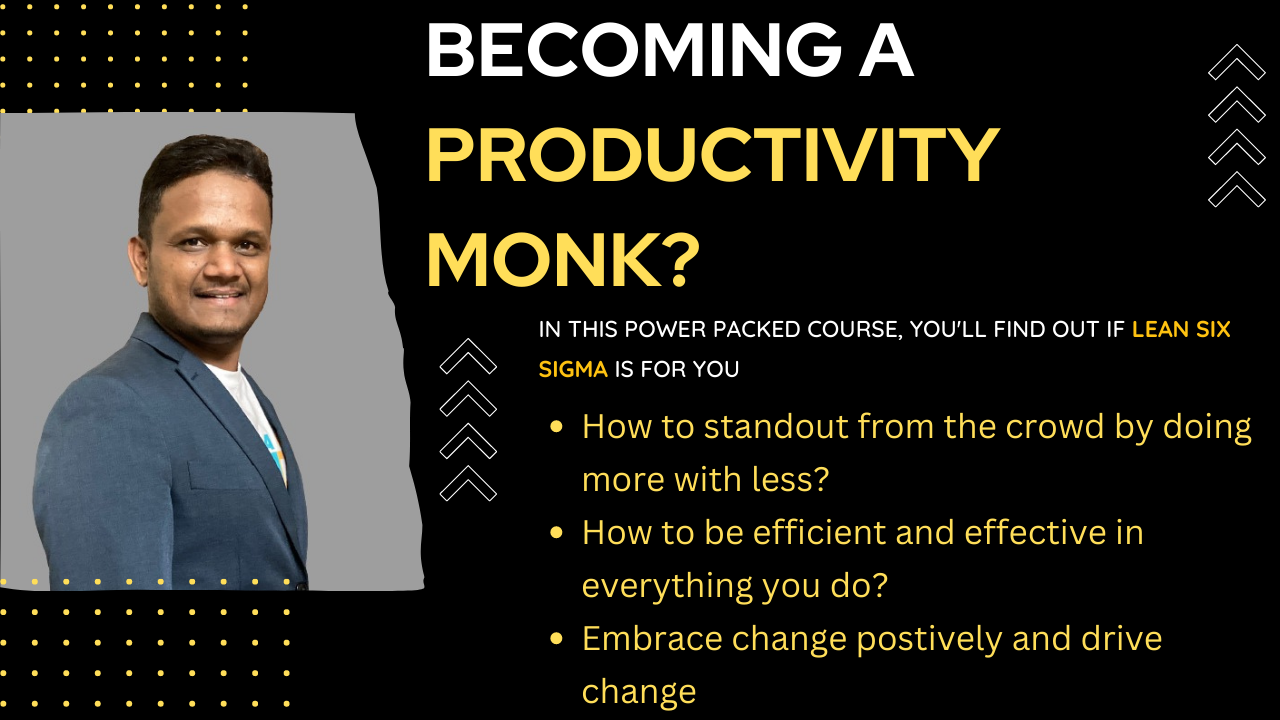

If you are doing the same things repeatedly and expecting different results, you are ignorant.
Yes, I mean it.
The world is changing at a faster pace than ever and needs people that see and do things differently. Customers have become smarter and expect greater levels of service and exceptional products from the companies.
To achieve this, companies have to do more with less and offer amazing customer experience and they need productivity monks that excel at everything they do.
Productivity Monks are customer obsessed and always focus on efficiencies and are highly effective in all walks of life and work.
Productivity Monks crave productivity, see waste in everything, and most importantly eliminate the waste by delivering only value-added products and services.
Productivity Monks question the status quo. They bring different perspectives to the table. They are highly innovative in nature. They apply cross-domain best practices. They become linchpins of their organizations.
But do you know how to become a productivity monk?
Are you clueless?
Don't worry.
This course will help you become a productivity monk and you will become stronger, and smarter than you think you are and you can imagine.
Up for the challenge?
Here comes the details, by attending this course, you will learn amazing tools and techniques that have been existing in the world for ages and are practiced by most successful companies like Apple, Amazon, Google, and more.
In this course you will learn:
Traits of a Productivity Monk
What great companies are doing differently to become the most sought-after brands?
Customer Satisfaction vs. Customer Loyalty
What to learn from bad customer experiences?
How to win Customer Loyalty?
Why people are reluctant to Change?
How to drive change effectively?
What are the factors leading to resistance/reluctance to change?
The Lean Philosophy from Japan, How automobile companies have benefitted and are still getting benefited?
Six Sigma - The GE and Motorola Way
Lean vs Six Sigma - Do they complement each other?
Lean vs Agile - Principles of Lean popularized by Agile/Scrum
How Lean provides input to Robotic Process Automation (RPA)
The 5 principles of Lean along with real-time scenarios.
8 Types of waste with practical examples from various domains.
Hands-on activity to identify and see waste
Cost of Poor Quality
Basics of Problem Solving
Why see problems as opportunities?
Root cause analysis (RCA) - Top 3 tools to perform RCA
Fishbone diagram, Pareto Chart, and 5 whys
Real-world problem-solving examples and how to apply these 3 tools?
Basics of Visual Management in general, Parking lot example
5 S in action, How a cowboy drives 1000s of cattle/horses/flock of sheep
Mistake proofing(Poka-Yoke) with numerous examples from multiple industries
Levels of Lean six sigma certification
Who should pursue LSS certification?
How to identify LSS projects?
DMAIC process overview
DPMO and 3 vs 4 vs 5 vs 6 Sigma
And many more interesting topics coming directly from a Master Black Belt who has been a productivity monk for over 19 years.
Is it worth becoming a Productivity Monk? What is it being a Productivity Monk?
Continuous Improvement (CI) Mindset and Its importance in this VUCA World, CI methodologies
Difference between Customer Satisfaction and Customer Loyalty. How to win Customer Loyalty?
How Lean Complements Agile, RPA and Six Sigma? Benefits of Lean Six Sigma, Definition of Sigam levels, Defects per Million Opportunities etc.
Understand various Levels of Lean Six Sigma (LSS) Certification, and decide whether or not to proceed with LSS certification
5 Lean Principles, 8 types of Waste, Root Cause - Problem Solving, Fishbone diagram, 5 Whys & Pareto Chart, Visual Mgmt, 5S, Mistake Proofing with examples
Doing more with less - being productive personally and professionally.
Have passion to make a difference and willingess to stand out from the crowd.
Take the course with open mind and have the ability to connect the dots
